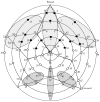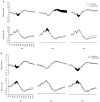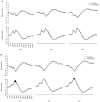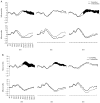Neural correlates of face and object recognition in young children with autism spectrum disorder, developmental delay, and typical development
- PMID: 12038546
- PMCID: PMC3651041
- DOI: 10.1111/1467-8624.00433
Neural correlates of face and object recognition in young children with autism spectrum disorder, developmental delay, and typical development
Abstract
This study utilized electroencephalographic recordings to examine whether young children with autism spectrum disorder (ASD) have impaired face recognition ability. High-density brain event-related potentials (ERPs) were recorded to photos of the child's mother's face versus an unfamiliar female face and photos of a favorite versus an unfamiliar toy from children with ASD, children with typical development, and children with developmental delay, all 3 to 4 years of age (N = 118). Typically developing children showed ERP amplitude differences in two components, P400 and Nc, to a familiar versus an unfamiliar face, and to a familiar versus an unfamiliar object. In contrast, children with ASD failed to show differences in ERPs to a familiar versus an unfamiliar face, but they did show P400 and Nc amplitude differences to a familiar versus an unfamiliar object. Developmentally delayed children showed significant ERP amplitude differences for the positive slow wave for both faces and objects. These data suggest that autism is associated with face recognition impairment that is manifest early in life.
Figures






References
-
- Aggleton JP. The functional effects of amygdala lesions in humans: A comparison with findings from monkeys. In: Aggleton JP, editor. The amygdala: Neurobiological aspects of emotion, memory, and mental dysfunction. New York: Wiley-Liss; 1992. pp. 485–503.
-
- Aggleton JP, Burton MJ, Passingham RE. Cortical and subcortical afferents to the amygdala of the rhesus monkey (Macaca mulatta) Brain Research. 1980;190:347–368. - PubMed
-
- Allison T, Puce A, Spencer DD, McCarthy G. Electrophysiological studies of human face perception. I: Potentials generated in the occipitotemporal cortex by face and non-face stimuli. Cerebral Cortex. 1999;9:415–430. - PubMed
-
- Amaral DG, Price JL, Pitkanen A, Carmichael T. Anatomical organization of the primate amygdaloid complex. In: Aggleton JP, editor. The amygdala: Neurobiological aspects of emotion, memory, and mental dysfunction. New York: Wiley-Liss; 1992. pp. 1–66.
-
- American Psychiatric Association. Diagnostic and statistical manual of mental disorders. 4. Washington, DC: Author; 1994.
Publication types
MeSH terms
Grants and funding
LinkOut - more resources
Full Text Sources
Other Literature Sources

